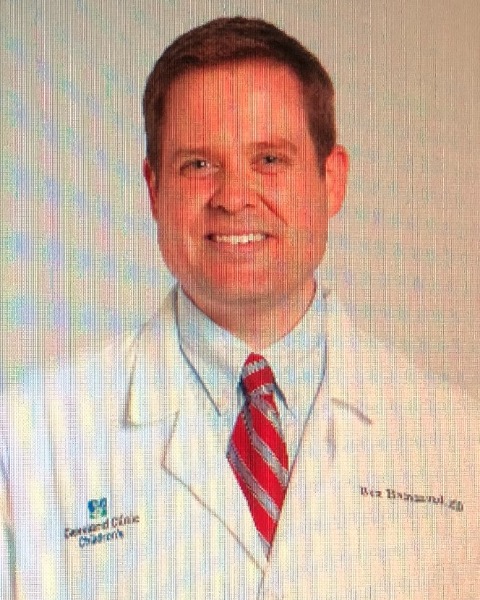On-Demand Oral
Counseling Young Patients with Heart Disease Regarding Sports Participation
On-demand
Background/Purpose:
Many young patients with congenital heart disease (CHD), cardiomyopathies or inherited arrhythmia syndromes are at an increased risk for sudden cardiac death (SCD). These patients have been restricted from sports participation to various degrees given the perceived risk. We sought to determine the prevalence of counseling about sports participation by pediatric cardiologists, the effectiveness of counseling, the adherence to published recommendations and the rate of participation in sports by young patients with heart disease.
Methods:
Using a cross-sectional research model, we gave IRB-approved surveys about sports participation to patients age 6 to 29 years. Surveys were distributed from December 2018 to November 2019 in the cardiology clinic at Cleveland Clinic Children’s. Patients with a cardiac diagnosis addressed in the most recent ACC/AHA sports participation recommendations (Maron et al, JACC 2015) were included. Of the 211 surveys returned, 190 patients met inclusion criteria. Patients charts were reviewed to determine documentation of sports counseling by providers and risk for sports participation in accordance with the 2015 guidelines.
Results:
The mean age of patients was 16.9 ± 4.8 years and 148 (78%) were participating in recreational or competitive sports. A majority (66%, 126/190) had a diagnosis of CHD. There were 92 (48%) patients with documented sports recommendations in the chart. Of those with documented recommendations, 76/92 (83%) of patients reported that sports participation counseling occurred annually with their cardiologist, but only half (45/92, 49%) correctly reported these recommendations in the survey (see figure). Sixty (32%) patients would be restricted by the current ACC/AHA guidelines. While there were several participating in recreational sports and low-intensity sports that are acceptable by the guidelines, 16/60 (27%) athletes were participating in competitive sports against guidelines most competing with the documented support of their cardiologist by way of shared decision-making (10/16). When asked, 54/190 (28%) of patients wanted to participate in more sports but were not out of fear (n = 14), physician restriction (n = 23), parental restriction (n = 10), or other reasons (n = 7). The majority of patients desiring to participate in more sports were restricted in some way by their cardiologist (36/54, 67%), but others 33% (18/54) were not restricted and were self-limiting.
Conclusions:
While pediatric cardiologists are counseling about sports, only half of young patients with heart disease understand the recommendations. One quarter of young athletes with significant heart disease are participating in sports against current guidelines, most of whom are doing so after making shared decisions with their physician and family.
Many young patients with congenital heart disease (CHD), cardiomyopathies or inherited arrhythmia syndromes are at an increased risk for sudden cardiac death (SCD). These patients have been restricted from sports participation to various degrees given the perceived risk. We sought to determine the prevalence of counseling about sports participation by pediatric cardiologists, the effectiveness of counseling, the adherence to published recommendations and the rate of participation in sports by young patients with heart disease.
Methods:
Using a cross-sectional research model, we gave IRB-approved surveys about sports participation to patients age 6 to 29 years. Surveys were distributed from December 2018 to November 2019 in the cardiology clinic at Cleveland Clinic Children’s. Patients with a cardiac diagnosis addressed in the most recent ACC/AHA sports participation recommendations (Maron et al, JACC 2015) were included. Of the 211 surveys returned, 190 patients met inclusion criteria. Patients charts were reviewed to determine documentation of sports counseling by providers and risk for sports participation in accordance with the 2015 guidelines.
Results:
The mean age of patients was 16.9 ± 4.8 years and 148 (78%) were participating in recreational or competitive sports. A majority (66%, 126/190) had a diagnosis of CHD. There were 92 (48%) patients with documented sports recommendations in the chart. Of those with documented recommendations, 76/92 (83%) of patients reported that sports participation counseling occurred annually with their cardiologist, but only half (45/92, 49%) correctly reported these recommendations in the survey (see figure). Sixty (32%) patients would be restricted by the current ACC/AHA guidelines. While there were several participating in recreational sports and low-intensity sports that are acceptable by the guidelines, 16/60 (27%) athletes were participating in competitive sports against guidelines most competing with the documented support of their cardiologist by way of shared decision-making (10/16). When asked, 54/190 (28%) of patients wanted to participate in more sports but were not out of fear (n = 14), physician restriction (n = 23), parental restriction (n = 10), or other reasons (n = 7). The majority of patients desiring to participate in more sports were restricted in some way by their cardiologist (36/54, 67%), but others 33% (18/54) were not restricted and were self-limiting.
Conclusions:
While pediatric cardiologists are counseling about sports, only half of young patients with heart disease understand the recommendations. One quarter of young athletes with significant heart disease are participating in sports against current guidelines, most of whom are doing so after making shared decisions with their physician and family.

Benjamin H. Hammond, MD
Fellow, Pediatric Cardiology
Cleveland Clinic Children's
Cleveland, Ohio
